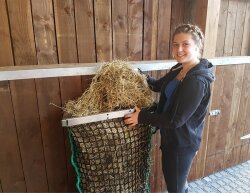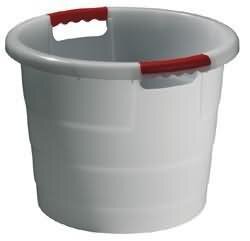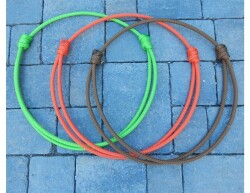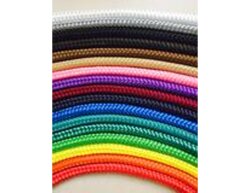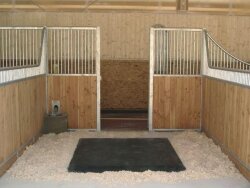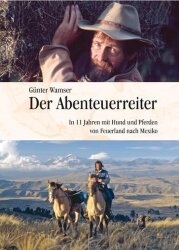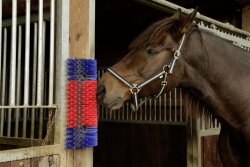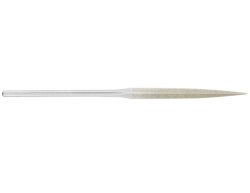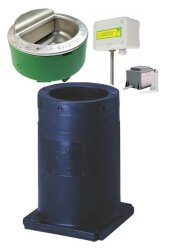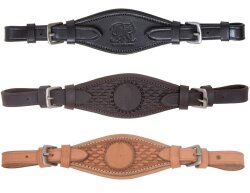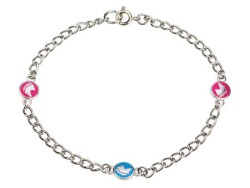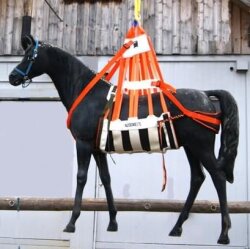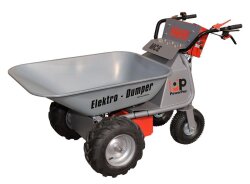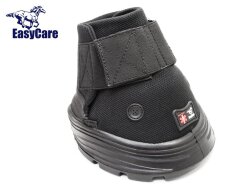Nonetheless, it is hard to convince die-hard straw enthusiasts, who dream of clean resting areas generously filled with straw for the horses to nestle down on. However, the reality of the situation in everyday farm life is often somewhat different. One can easily be taken aback at how quickly areas covered in straw become wet and dirty. As soon as a whole group of horses descend on the freshly-strewn resting area, it quickly turns into a free-for -all food hall.
In doing so the horses jostle for the best stalks greatly increasing the danger of horses injuring themselves through greed. After feeding time the resting area is first used as a toilet before being used for its actual purpose of sleeping and resting. Furthermore the level of dust and fungus pollution in poor quality straw is unbelievably high, which causes the horses to suffer greatly, especially when they are exposed to it over a longer period of time.
Beyond this, the straw and manure mucking out cycle is incredibly labour and cost-intensive. The bottom line is that edible bedding material is not the ideal solution in a good group husbandry concept. Straw should rather be offered in small quantities as feed for the horses to chew on in the feeding racks intended for this purpose. From the horse’s perspective, the use of regularly bought-in additional non-edible bedding material, such as bedding pellets, wood pellets or the like, is much more convenient. From the perspective of the stable operators, the relatively high running costs might also make this solution inadvisable. Due to the above reasons HIT equestrian beds have gained increasingly in popularity over the last few years.
The soft and comfortable HIT equestrian beds serve to create ideal resting areas; they neither cause dust, nor do they trigger jealousy among the horses when feeding. There are certain specific behavioural characteristics which should be kept in mind, in order to ensure that the HIT equestrian beds are well received by the horses and fulfill their purpose.
The resting area should be designed to accommodate the specific group of horses, in terms of its size and structure. It is highly recommendable to use partitions as well as at least two sufficiently large entrances. The positioning of the bedded horse toilets, preferably under the canopy roof in the resting area near the entrances, encourages the horses to urinate in this designated area. This not only provides an environmentally-friendly solution, but also helps to keep the HIT equestrian beds dry.
